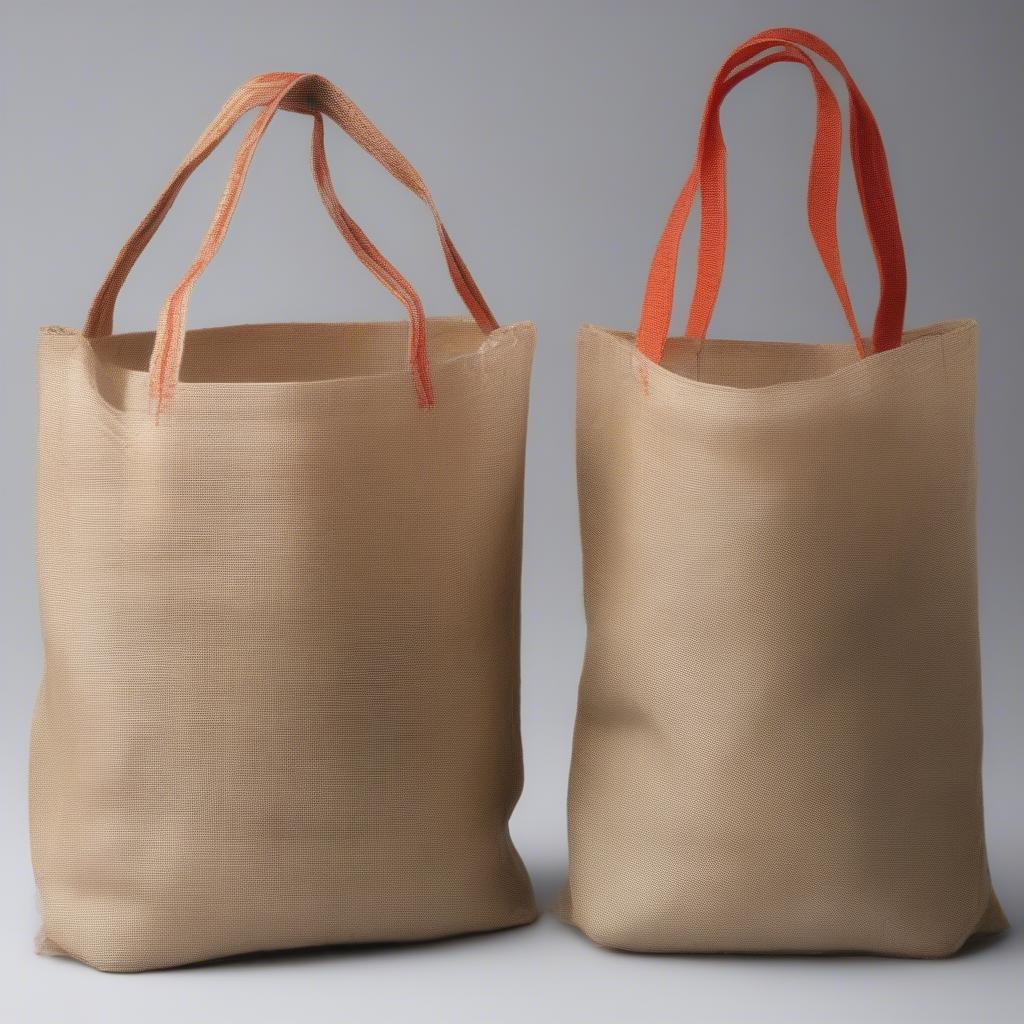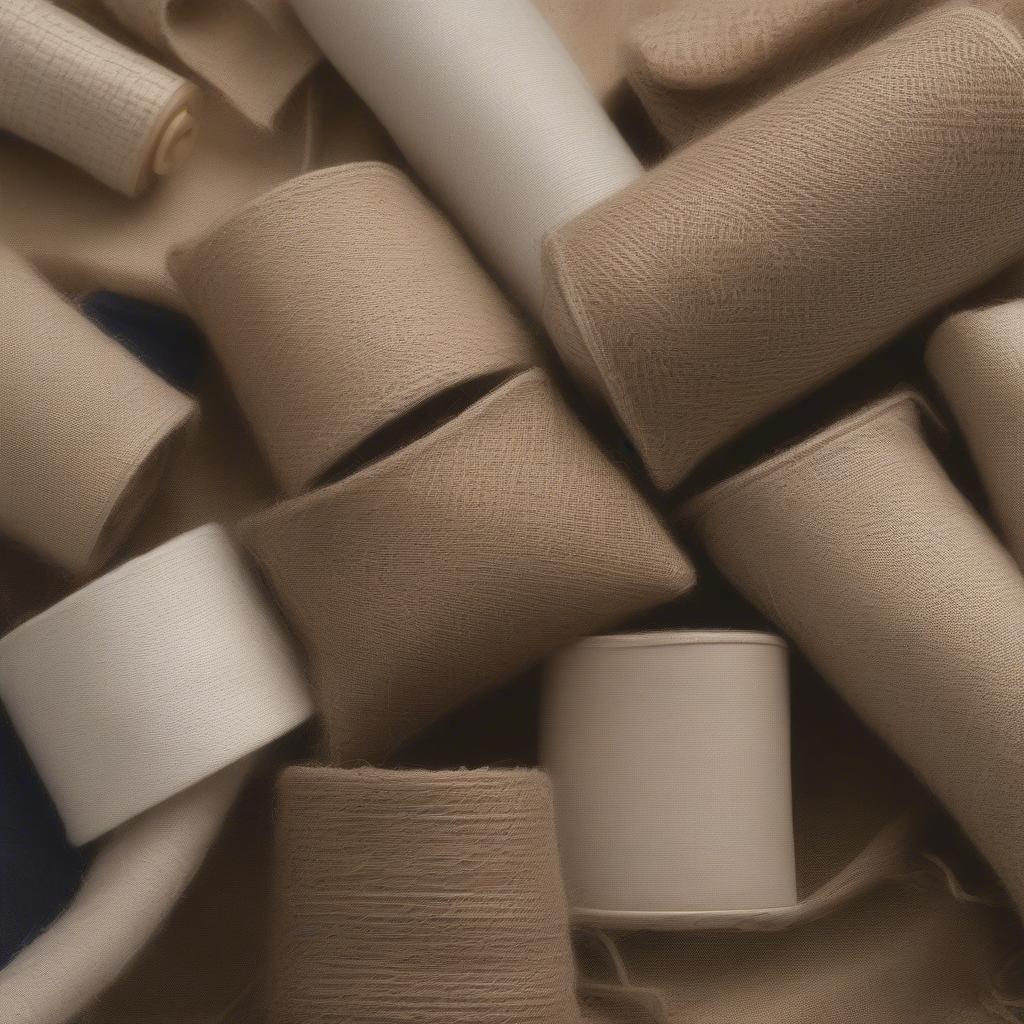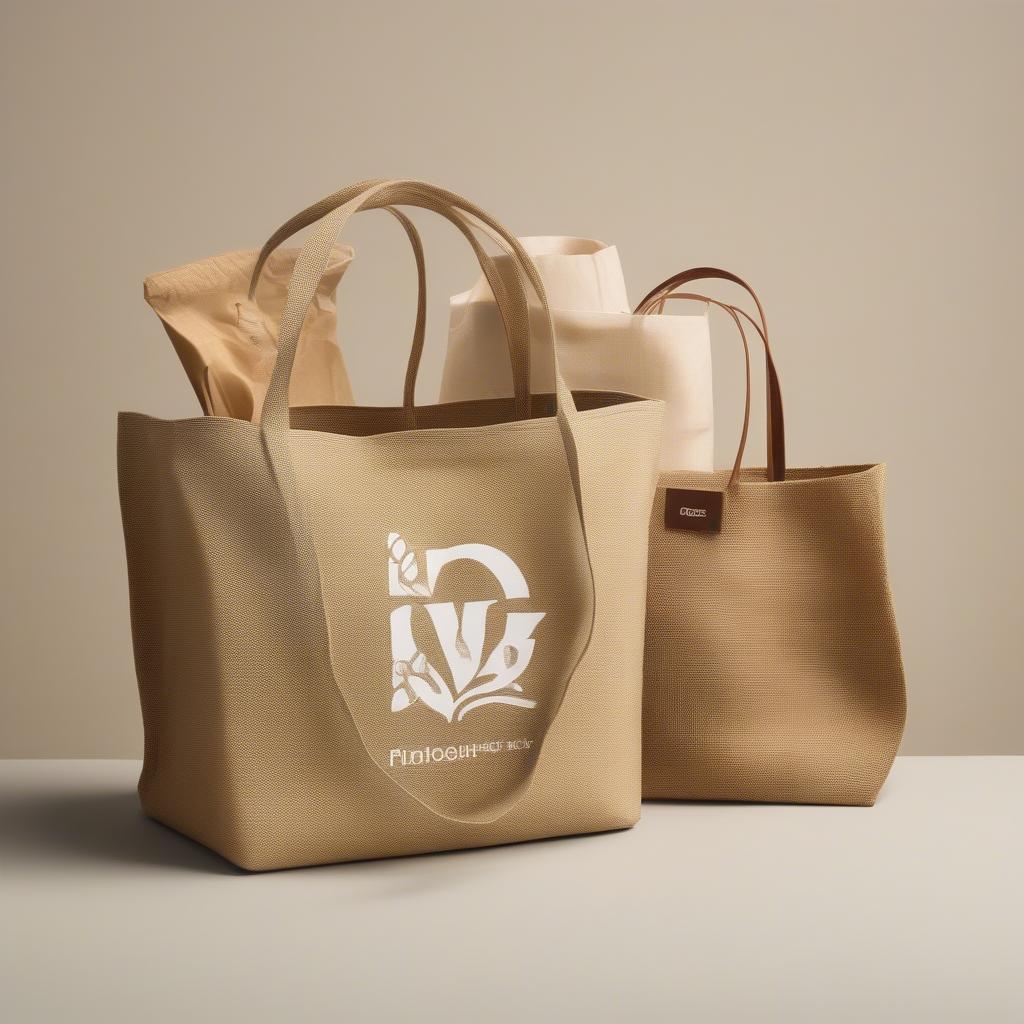Woven Bag
Difference Between Non-Woven and Woven Bags
Understanding the difference between non-woven and woven bags is crucial for making informed decisions, whether you’re a business owner seeking packaging solutions or a conscious consumer looking for eco-friendly options. This guide explores the key distinctions between these two popular bag types.
Woven vs. Non-Woven Bags: What Sets Them Apart?
Woven bags, as the name suggests, are created by interlacing threads or fibers, a process similar to weaving fabric. This traditional technique results in a durable, often textured material. Think of the classic wicker basket or a sturdy jute shopping bag – these are examples of woven construction. In contrast, non-woven bags are manufactured by bonding or entangling fibers together through mechanical, thermal, or chemical processes. This creates a sheet-like material without the distinct interwoven structure of woven fabrics. Think of reusable shopping bags often given away at promotional events.  Woven vs. Non-Woven Bags: A visual comparison showing the interwoven structure of a woven bag (e.g., jute) and the sheet-like structure of a non-woven bag (e.g., polypropylene).
Woven vs. Non-Woven Bags: A visual comparison showing the interwoven structure of a woven bag (e.g., jute) and the sheet-like structure of a non-woven bag (e.g., polypropylene).
Durability and Strength: Which Bag Holds Up Best?
Woven bags, especially those made from natural fibers like jute or cotton, are generally known for their strength and durability. They can withstand heavier loads and are less prone to tearing. However, the strength can vary based on the material and weaving technique. For instance, a finely woven silk bag will naturally be less robust than a coarsely woven jute bag. Non-woven bags, while not as inherently strong as woven counterparts, still offer reasonable durability, especially for lighter items. Their strength depends largely on the thickness and density of the material. Heavier-duty non-woven bags, often made from polypropylene, can be surprisingly resilient.
What’s the quickest way to understand woven bags? Check out our woven bags definition.
Material Matters: A Closer Look at What They’re Made Of
Woven bags are crafted from a wide array of materials, both natural and synthetic. Natural options include jute, cotton, hemp, and bamboo, offering a sustainable and eco-friendly choice. Synthetic woven bags might utilize materials like polypropylene or nylon, often providing increased water resistance. Non-woven bags primarily rely on synthetic fibers such as polypropylene, polyester, or nylon. These materials are lightweight, water-resistant, and readily available. Some non-woven bags may incorporate recycled materials, enhancing their eco-friendly profile.  Materials used in Woven and Non-Woven Bags: A collage showcasing various materials used for woven bags (jute, cotton, hemp) and non-woven bags (polypropylene, polyester).
Materials used in Woven and Non-Woven Bags: A collage showcasing various materials used for woven bags (jute, cotton, hemp) and non-woven bags (polypropylene, polyester).
If you are interested in small non-woven bags, you might want to check our page on small non woven bag.
Eco-Friendliness: Which Bag is Better for the Planet?
Both woven and non-woven bags can be environmentally friendly, depending on the specific material and manufacturing process. Natural fiber woven bags, being biodegradable and often compostable, are a strong sustainable choice. However, their production can be resource-intensive, requiring significant land and water. Non-woven bags made from recycled materials offer a good eco-friendly alternative. While not always biodegradable, they reduce reliance on virgin resources and minimize waste.
Are you looking for fiberglass non woven filter bags manufacturer?
Cost Comparison: Weighing Your Budget
Generally, non-woven bags are less expensive to produce than woven bags. This makes them a popular choice for promotional giveaways and large-scale packaging needs. Woven bags, especially those made from high-quality natural fibers, tend to be more expensive, reflecting the higher cost of materials and labor involved.
For businesses, understanding the difference between non woven and woven bags is crucial for choosing the right packaging solution.
Uses and Applications: Where Each Bag Shines
Woven bags, with their strength and aesthetic appeal, are ideal for various applications, from reusable shopping bags to stylish handbags. Their durability makes them suitable for carrying heavier items like groceries or books. Non-woven bags are widely used for shopping bags, promotional giveaways, and packaging for lightweight items. Their water-resistance makes them suitable for carrying items that need protection from moisture.
 Applications of Woven and Non-Woven Bags: Examples of woven bags used as shopping bags and fashion accessories, and non-woven bags used for promotional events and packaging.
Applications of Woven and Non-Woven Bags: Examples of woven bags used as shopping bags and fashion accessories, and non-woven bags used for promotional events and packaging.
In conclusion, the difference between non-woven and woven bags boils down to their construction, material, durability, cost, and environmental impact. By understanding these key distinctions, you can choose the bag that best suits your needs and values.
Are you a manufacturer in Tamil Nadu? Check out our page for pp woven bags manufacturers in tamilnadu.
FAQ
- Are woven bags stronger than non-woven bags? Generally, yes.
- Which type of bag is more eco-friendly? Both can be, depending on the material.
- Are non-woven bags recyclable? Some are, depending on the material composition.
- What are woven bags typically made of? Jute, cotton, hemp, polypropylene, and nylon.
- What are non-woven bags typically made of? Polypropylene, polyester, and nylon.
- Which bag type is more cost-effective? Non-woven bags.
- What are the common uses of woven bags? Shopping bags, handbags, and packaging.
For more information on heat seal non-woven bags, visit our heat seal non woven bag manufacturer page.
Need help with your bag selection? Contact us at Hanoi, Vietnam or Tech Avenue, Suite 12, San Francisco, CA 94105, USA. We have a 24/7 customer support team ready to assist you.
